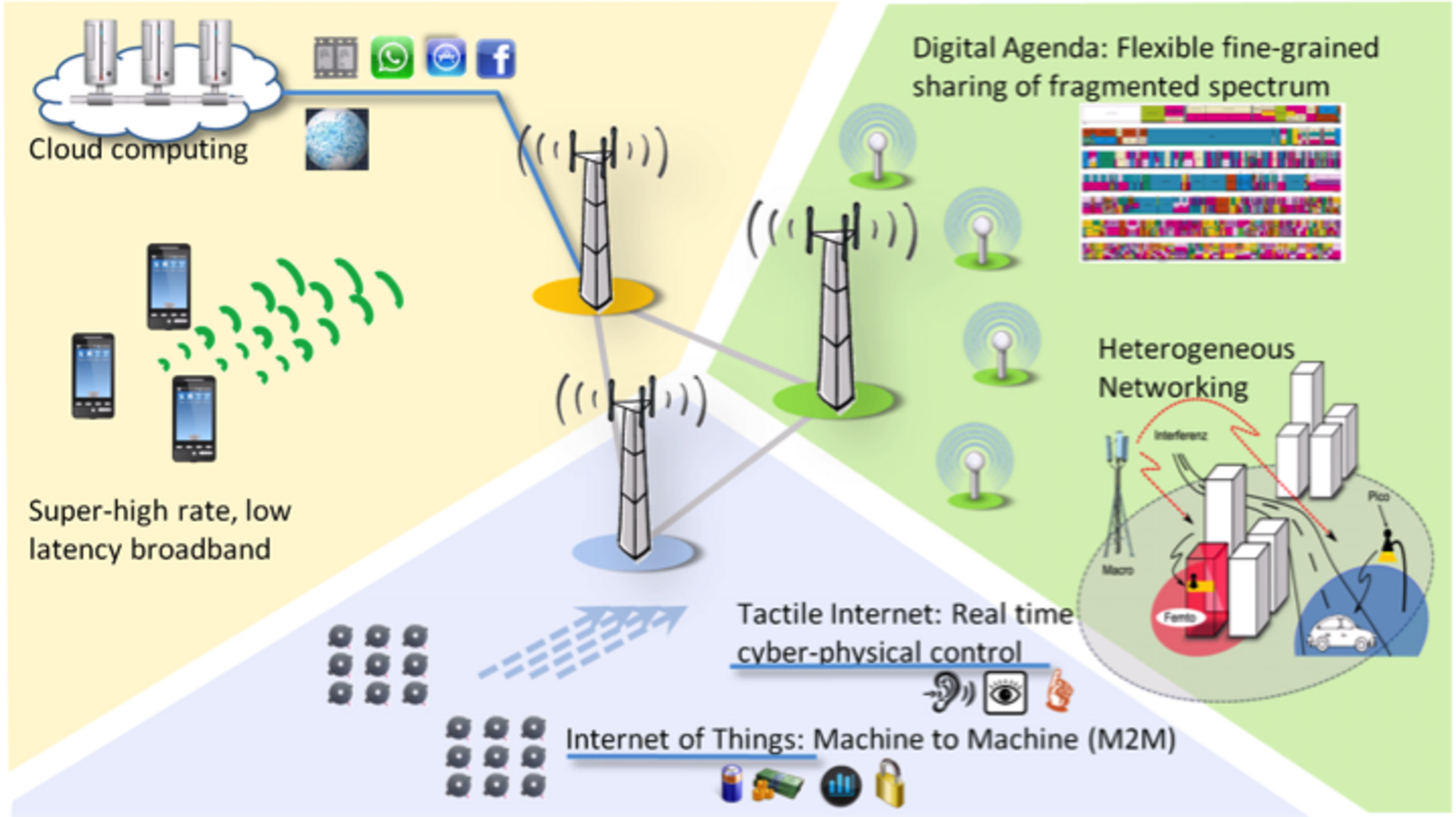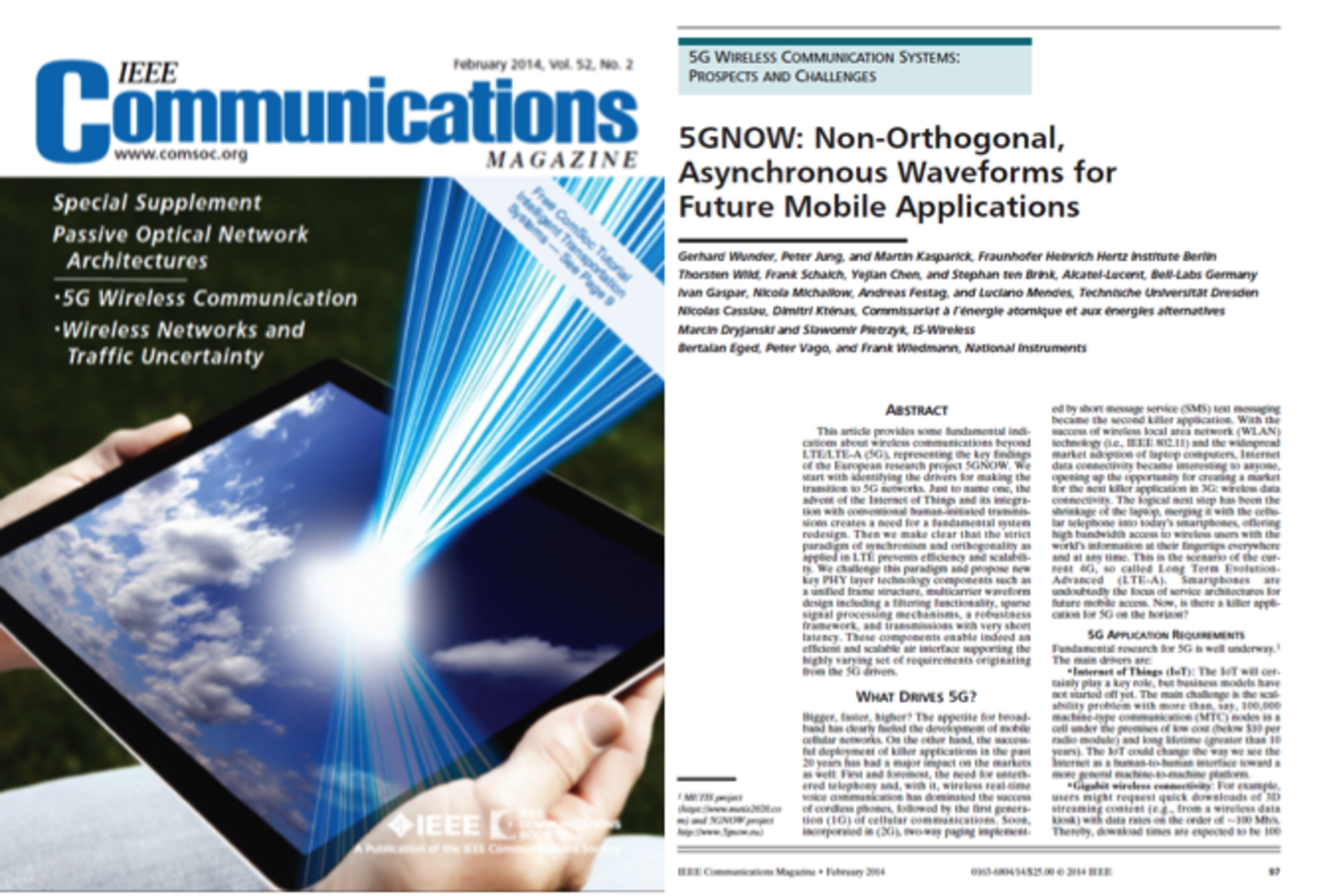Fundamental research towards the fifth generation (5G) of cellular communication systems is under way, driven by killer applications such as Internet of Things, Gigabit Wireless Connectivity, and Tactile Internet.
The underlying design principles –synchronism and orthogonality– of the PHY layer of today’s LTE-A radio access network constitute a major obstacle for the envisioned service architecture. Also, sporadic traffic generating devices (e.g., MTC devices in the IoT) should not be forced to be integrated into the bulky synchronisation procedure of LTE-A PHY layer random access. Therefore, it is widely accepted that new 5G air interfaces are needed.

Our research on waveform design aims to enable future networks to meet the manifoldness of services and device classes (like in smart cities), to integrate MTC systems (e.g. sensor networks) and to provide a more uniform and satisfying per-user experience.
Selected Publications
- “5GNOW: Non-orthogonal, Asynchronous Waveforms for Future Applications,” G. Wunder, P. Jung, M. Kasparick, T. Wild, F. Schaich, Y. Chen, S. t. Brink, I. Gaspar, N. Michailow, A. Festag, G. Fettweis, N. Cassiau, D. Ktenas, M. Dryjanski, S. Pietrzyk, and P. Vago, IEEE Communication Magazine, 5G Special Issue, vol. 52, no. 2, pp. 97-105, Feb. 2014.
- "The WSSUS Pulse Design Problem in Multicarrier Transmission",P. Jung and G. Wunder, IEEE Transaction on Communications, vol. 55, no. 10, pp. 1918-1928, Oct. 2007
- "Compressive Random Access for Post-LTE Systems," G. Wunder, P. Jung, and C. Wang, IEEE International Conference on Communications (ICC) 2014, June 2014.
- "Bi-orthogonal Waveforms for 5G Random Access with Short Message Support,", M. Kasparick, G. Wunder, P. Jung, and D. Maryopi, Proceedings European Wireless Conference 2014, Barcelona, Spain, May 2014.
